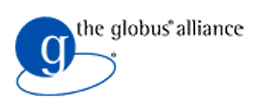Calit2 Sponsors Tutorial: 'Building Web Services Resource Networks with Globus'
May 25, 2005 / By Doug Ramsey
5.25.2005 -- Virtual, observation-based science is beginning to enable both real-time and continuous, long-term exploration of, and investigative interaction with, the physical world. Such science is making it possible to
|
- Fully and quantitatively characterize selected volumes of the atmosphere, water column, and solid earth including physical properties, dynamics, and life forms.
- Recognize departures from the known and the norm to observe emergent phenomena.
In this context, instruments in the field represent the interface between the observer and the observed, and can provide rich and ongoing sources of data.
But how do we enable easy, authorized access to such instruments via resilient applications across diverse, distributed communities of interest? And what if these instruments are on multiple networks that not only span different scientific and spatial domains but most likely are operated by a variety of stakeholders with different technical and security requirements? That is, how do you represent the governance of a resource – in terms of trust, authentication, and authorization – in a scalable manner across a heterogeneous, distributed environment with multiple communities providing these resources and consuming their data?
These are some of the complex issues that motivated a recent two-day tutorial on building Web services, organized by Matthew Arrott and co-sponsored by Calit2. The tutorial focused on the Web Services Resource Framework (WSRF) and the Globus Toolkit v4.0 as a possible standard for representing resources beyond the traditional computational, storage, and network classification of resource such as instruments and sensors.
More than 30 people attended this workshop held May 3-4 at UCSD. It was designed for system architects of observatory networks involved in the LOOKING grant, but space was made available to other physical and virtual observatory projects, e.g., MARS, Neptune Canada, GEON, SEEK, as well as a variety of interested others. This workshop was complemented by an additional one-day design meeting for the LOOKING architecture team of computer scientists and oceanographers.
LOOKING, which stands for Laboratory for Ocean Observing Knowledge INtegration Grid, is an NSF-funded Information Technology Research project prototyping communications and data-management infrastructure to link research institutions on land with several existing or planned ocean observatories off the coasts of the US, Canada, and Mexico. It is led by University of Washington oceanographer John Delaney and Scripps Institution of Oceanography deputy director John Orcutt.
The tutorial provided an in-depth introduction to programming with WSRF and the latest version of the Globus Toolkit (GT4). The first day covered how to build a Java service that makes use of GT4 mechanisms for state management, security, and registry. It consisted of a series of hands-on exercises in which attendees added increasing functionality to a skeletal service implementation. The second day covered execution management services, data movement and management services, and security services; reviewed higher-level tools that build on Globus mechanisms; and introduced administration of a GT4-based Grid.
“We looked at two things,” said Arrott. “How to use the Globus implementation of the WSRF standard to represent the resource and what the security standards community is doing with respect to issues of identity management, authentication, and authorization, with particular focus on Globus GSI and Internet2 Shibboleth efforts.”
With respect to security standards efforts, Arrott sees the merging of the Liberty Alliance and Shibboleth technologies with those of SAML1.1 into the SAML2.0 specification as a very important step towards establishing the necessary suite of interoperability patterns to enable development of scalable applications using systems of autonomously governed resource networks. With additional funding, he anticipates organizing a tutorial on the Security Assertion Markup Language to enable access to resources across multiple governance systems.
The workshop was also sponsored by the Globus Alliance, the Center for Earth Observations and Applications at the Scripps Institution of Oceanography, and the San Diego Supercomputer Center. Special thanks go to Ian Foster and the team of Globus instructors Charles Bacon, Lisa Childers, Lee Liming, and Frank Siebenlist.
All tutorial and presentation materials can be found at
www.lookingtosea.org/events/WSRFGT4ProgramingTutuorial
Related Links
OASIS – WSRF: http://www.oasis-open.org/committees/tc_home.php?wg_abbrev=wsrf
Globus Alliance : http://www.globus.org/
Liberty Alliance : http://www.projectliberty.org/
Shibboleth: http://shibboleth.internet2.edu/
SAML 2.0: http://www.oasis-open.org/committees/tc_home.php?wg_abbrev=security


